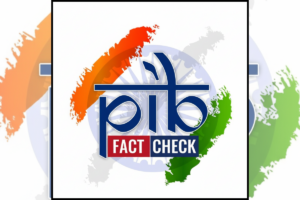
Surface Water and Ocean Topography (SWOT)
SWOT will blast off from southern California on 15 December 2022. According to NASA, the mission is named Surface Water and Ocean Topography (SWOT). It will provide a highly detailed three-dimensional view of rivers, lakes and oceans.
“SWOT promises to improve our understanding of Earth’s water cycle and the role oceans play in climate change, as well as help us better respond to drought and flooding,” the space agency added. It will give researchers measurements of the volume of water that is moving and changing, which will help us understand how much freshwater is available, the risk of flooding and how climate change works.
SWOT incorporates advanced microwave radar technology. The data, compiled from radar sweeps of the planet at least twice every 21 days, will enhance ocean-circulation models, bolster weather and climate forecasts and aid in managing scarce freshwater supplies in drought-stricken regions, according to researchers.
The satellite was designed and built at NASA’s Jet Propulsion Laboratory (JPL) near Los Angeles. Developed by the U.S. space agency in collaboration with its counterparts in France and Canada, SWOT was one of 15 missions listed by the National Research Council as projects NASA should undertake in the coming decade.
“It’s really the first mission to observe nearly all water on the planet’s surface,” said JPL scientist Ben Hamlington, who also leads NASA’s sea-level change team.
The heart of SWOT!
One major thrust of the mission is to explore how oceans absorb atmospheric heat and carbon dioxide in a natural process that moderates global temperatures and climate change.
The heart of SWOT!
A new Earth-observing satellite will survey water on more than 90% of Earth’s surface and see our planet's water in higher definition than ever before. An instrument called the Ka-band Radar Interferometer (KaRIn) is making it possible: https://t.co/TW1YtUQRqu pic.twitter.com/P64cm8cv0w
— NASA JPL (@NASAJPL) December 13, 2022
Scanning the seas from orbit, SWOT is designed to precisely measure fine differences in surface elevations around smaller currents and eddies, where much the oceans’ drawdown of heat and carbon is believed to occur. And SWOT can do so with 10 times greater resolution than existing technologies, according to JPL.
Studying the mechanism by which that happens will help climate scientists answer a key question: “What is the turning point at which oceans start releasing, rather than absorbing, huge amounts of heat back into the atmosphere and accelerate global warming, rather than limiting it,” said Nadya Vinogradova Shiffer, SWOT’s program scientist at NASA in Washington.
SWOT’s ability to discern smaller surface features also be used to study the impact of rising ocean levels on coastlines. Freshwater bodies are another key focus SWOT, equipped to observe the entire length of nearly all rivers wider than 330 feet (100 meters), as well as more than 1 million lakes and reservoirs larger than 15 acres (62,500 square meters).
Taking inventory of Earth’s water resources repeatedly over SWOT’s three-year mission will enable researchers to better trace fluctuations in the planet’s rivers and lakes during seasonal changes and major weather events.
Also read: HAKUTO-R Mission : World’s First Commercial Moon Lander Launched
To read more such news, download Bharat Express news apps





















